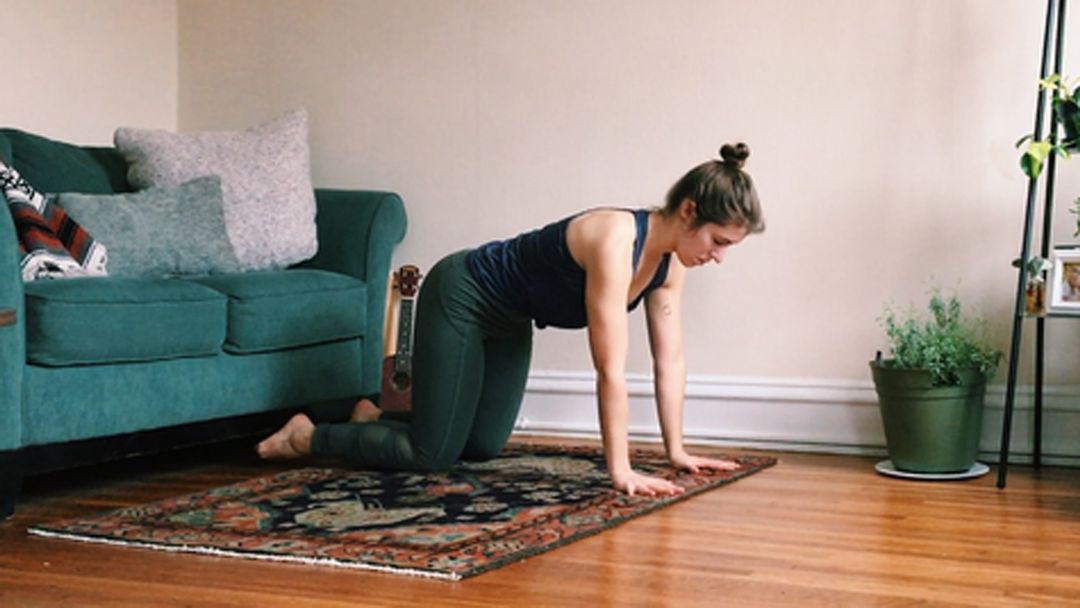In many inverted yoga poses, we must cultivate and trust the strength in our forearms and shoulders to support us. And once you’ve made it, there’s a whole new world of your practice to unlock.
Read on to learn about the why’s & the how to’s of these 5 forearm strength building poses.
Hasta bandha drills
Why do it: When balancing on your forearms, every square inch of physical contact you have with the mat matters. So we’re talking about your hands here. “Hasta bandha” in Sanskrit translates to “hand lock.” Your hands are like a rudder for your forearm practice – helping to steer you by negotiating your balance and activating your forearm muscles.
& How to: To engage hasta bandha, firmly grip the mat, as if you are trying to wrap your hands around a jar lid. Use every part of your hands, especially by pressing down through the fingertips and rooting down through the heel of your palms.
Forearm plank
Why do it: Forearm plank is a super strengthening core pose. In addition, you can practice gripping the mat with your hands from forearm plank, activating that hasta bandha (if you missed it, scroll back up).
& How to: Bring your forearms onto the ground, setting up your elbows directly underneath your shoulders. Press your heels back towards the wall behind you, while reaching the crown of your head towards the front of the room, creating a long line of energy from heel to head. Press your elbows down into your mat to lift up out of your shoulder blades.
Dolphin pose
Why do it: Dolphin pose is the first step in getting comfortable balancing on your forearms. In this pose, you are inching towards getting the hips over top of the shoulders, creating an inversion. This pose is HARD. Hold it for a minute, or even a few breaths, and you’ll feel the strength building in your shoulders, core, and back.
& How to: From forearm plank, walk your feet towards your elbows, as if you are walking into a forward fold. Play around with shifting your weight forwards onto the forearms (feeling the shoulder muscles activating), so that the weight in your feet becomes lighter.
Chaturanga
Why do it: Chaturanga in the foundation for so many other poses in yoga. Inversions are like the shape of chaturanga, but rotated so your feet are up above your head. In forearm balancing poses, the same shape of chaturanga arms are essential in creating a stable base of support on the ground.
& How to: From your high plank, shift your weight forward into your toes, to bring your shoulders slightly in front of your wrists. Lower down halfway, so that you are making 90 degree angles from shoulder to elbow to wrist to floor. Remember the key principles we learned in forearm plank, and apply those here. This is a pose, so stay here and breathe!
Wall L
Why do it: This is an exercise to practice as one step closer to a full inversion on your forearms.
& How to: Sit down facing a wall, and press your feet into the wall. This is how far away from the wall you want to be. Turn around, and place your hands where your hips are. Come into your dolphin pose, and then walk up the wall so that your feet are about the height of your hips, and your hips are directly over your shoulders. Hold this for 30 seconds to 1 minute. Gradually building up your time here.
You don’t have to have the pose to practice it, but you do have to practice the pose to have it! We call it a “yoga practice” for a reason – not a “yoga perfect.” So use these 5 strength building poses to harness your confidence and gain your ability to balance on your forearms.








